What İs A Parrot?
Parrots are fascinating creatures with colorful plumages, talkative personalities, and distinct behaviors that make them one of the most popular pet species in the world. If you’re an animal lover, you’re probably familiar with these feathered friends, but have you ever wondered what makes them unique? In this blog post, we’re going to explore the characteristics, habits, and traits that define the parrot species and make them such fascinating creatures.
 At its core, a parrot is a bird that belongs to the Psittaciformes order, which includes over 393 species of parrots, macaws, conures, lovebirds, and other feathered friends. These avian companions are known for their colorful plumages, hooked bills, and broad wings, which allow them to fly for long distances in search of food, mates, and nesting habitats. Most parrots have zygodactyl feet, which means they have two toes pointing forwards and two toes pointing backward, which gives them great dexterity and the ability to grasp objects securely.
At its core, a parrot is a bird that belongs to the Psittaciformes order, which includes over 393 species of parrots, macaws, conures, lovebirds, and other feathered friends. These avian companions are known for their colorful plumages, hooked bills, and broad wings, which allow them to fly for long distances in search of food, mates, and nesting habitats. Most parrots have zygodactyl feet, which means they have two toes pointing forwards and two toes pointing backward, which gives them great dexterity and the ability to grasp objects securely.
Their diet varies depending on species, but in general, parrots are omnivores, which means that they eat both plants and animals. Their primary food sources include fruits, nuts, seeds, insects, and small animals like lizards, snails, and even small rodents. Parrots are intelligent creatures that possess problem-solving skills and can recognize their owners, their voices, and their routines.
- Some of the most common parrot species include:
- African Greys
- Amazons
- Cockatoos
- Conures
- Macaws
- Lovebirds
| Species | Color | Size |
|---|---|---|
| African Greys | Grey | Small |
| Amazons | Green / Red | Medium |
| Cockatoos | White / Pink | Large |
| Conures | Green / Blue / Yellow | Small / Medium |
| Macaws | Blue / Green / Red | Large |
| Lovebirds | Green / Red / Blue | Small |
Parrots are social creatures that thrive on interaction with their owners and other parrots. They enjoy playing, singing, and mimicking sounds, which is one of the reasons why they’re so beloved as pets. However, owning a parrot requires a lot of dedication and commitment, as they can live up to 60 years or more, which means that they can outlive their owners if not cared for properly.
In conclusion, parrots are fascinating creatures that have captured the hearts of people all around the world. If you’re considering getting a parrot as a pet, it’s important to do your research and learn about the species that you’re interested in, their dietary and environmental requirements, and their unique personalities. Parrots require proper care and training, but with the right approach, they can become your lifelong companions and bring joy and entertainment to your life for many years.
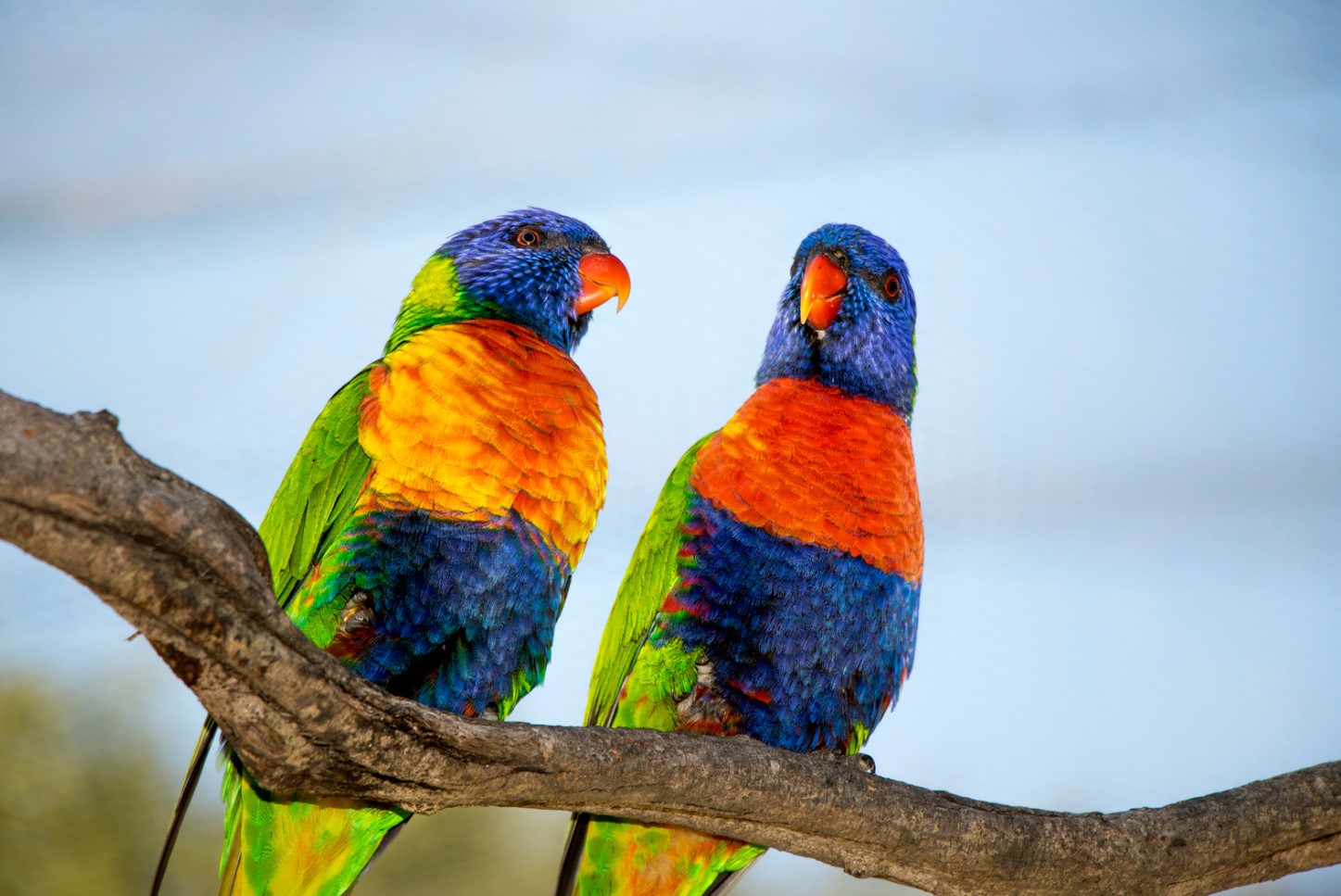
Types Of Parrots You Should Know
Parrots are one of the most popular pet birds in the world due to their intelligence, personality, and beautiful appearance. When considering owning a parrot, it is essential to choose the right one for you. There are numerous types of parrots, each with its unique appearance, temperament, and care requirements. Here are the types of parrots you should know before adopting one.
- African Grey Parrot: African Grey Parrots are highly intelligent and are known for their excellent talking ability. They can mimic sounds and words with amazing accuracy.
- Cockatoo: Cockatoos are beautiful birds with an outgoing and affectionate personality. They require a lot of attention and stimulation to keep them happy and mentally healthy.
- Macaw: Macaws are the largest and most colorful of all parrots. They are also very intelligent and require a lot of space to live and play.
In addition to these, there are also Amazon parrots, Conures, Lovebirds, and many more types of parrots. It is crucial to research each type to ensure that you can provide the appropriate care and attention they require.
| Comparison of Parrot Types | |
|---|---|
| Type | Characteristics |
| African Grey Parrot | Excellent talking ability, highly intelligent |
| Cockatoo | Outgoing, affectionate, requires a lot of attention |
| Macaw | Largest and most colorful, intelligent, requires a lot of space |
Before selecting a parrot as a pet, it is necessary to consider your lifestyle, your living environment, and your experience with bird care. To ensure a happy and healthy life for your feathered friend, it is necessary to provide food, shelter, plenty of exercise and stimulation, and attention. With the right research and preparation, a parrot can make an excellent companion for many years.
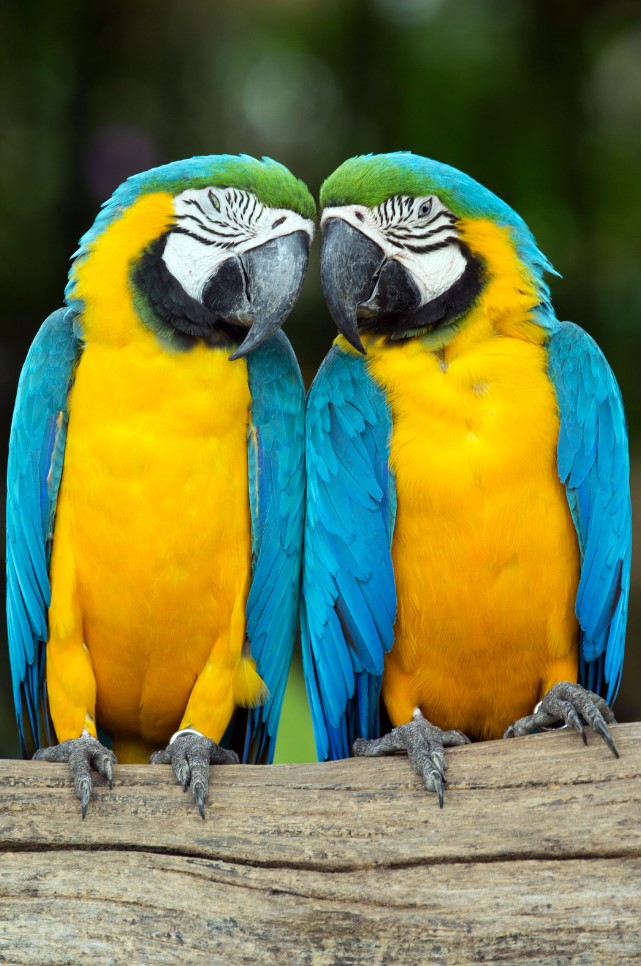
The Origin And History Of Parrots
Parrots are amazing creatures that have captured the hearts of many people around the world. These intelligent and colorful birds have a rich history that dates back centuries. The origin and history of parrots have a lot to do with their popularity as pets today. There is so much to learn and appreciate about these amazing creatures. So, let’s dive into the history of parrots and see where they came from.
Parrots were first discovered in the tropics of Central and South America. These birds were considered exotic and valuable for their beauty and intelligence. Ancient civilizations, such as the Mayans and the Incas, were known to keep parrots as pets. These birds were often used in religious ceremonies and believed to have supernatural powers.
The history of parrots continued to evolve as more explorers began to discover them. European traders began to bring parrots back to Europe in the 16th century. These birds quickly became popular as pets and were often given as gifts to nobility and royalty. The first parrots to arrive in Europe were the Blue and Gold Macaw, the African Grey Parrot, and the Amazon Parrot.
- Blue and Gold Macaw
- African Grey Parrot
- Amazon Parrot
As the popularity of parrots grew, so did the market for them. Unfortunately, the demand for these birds resulted in many of them being taken from their natural habitats illegally. This has led to a decline in the population of many parrot species and has put them on the endangered species list. Many countries have since implemented laws to protect parrots and their habitats.
| Species | Conservation Status |
|---|---|
| Hyacinth Macaw | Endangered |
| Yellow-headed Amazon Parrot | Critically Endangered |
| Sun Conure | Endangered |
The history of parrots is a long and fascinating one. From their origins in Central and South America to their popularity around the world, these birds have captured our hearts and imaginations. As we learn more about their history, it is important that we work to protect them and their habitats so that future generations can continue to enjoy their beauty and intelligence.
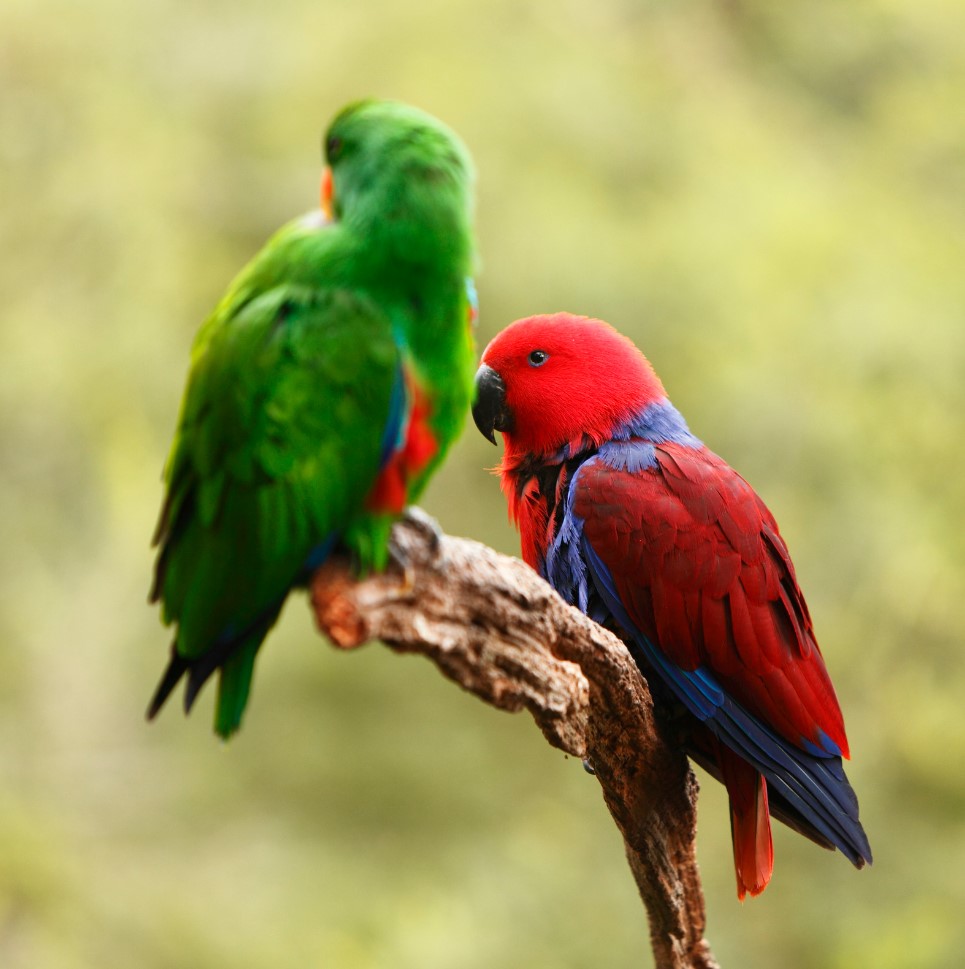
Parrots As Pets: Pros And Cons
When it comes to choosing a pet, the options are endless. From dogs to cats, to fish and rabbits, there’s a pet out there for everyone. However, have you ever considered a parrot? These colorful feathered friends are known to be intelligent, social, and even affectionate. But, before bringing one into your home, it’s important to understand the pros and cons of having a parrot as a pet.
- Pros:
- 1. Intelligence: Parrots are highly intelligent animals that can learn to mimic human speech and perform various tricks.
- 2. Affectionate: With proper socialization and training, parrots can develop close bonds with their owners and enjoy cuddling and affectionate moments.
- 3. Entertainment: Parrots are great at keeping their owners entertained with their playful personalities and amusing antics.
- 4. Longevity: Some parrot species, such as the Macaw, can live up to 50 years, which means that they can be a lifelong companion for their owners.
However, owning a parrot isn’t all fun and games. There are also some cons associated with having a parrot as a pet.
- Cons:
- 1. Noise: Parrots are known to be loud animals, and their screeches and screams can be disturbing to some people, especially in small apartments or shared living spaces.
- 2. Mess: Parrots are messy eaters and their seed shells and feathers can create a lot of mess and require daily cleaning.
- 3. Attention: Parrots are highly social animals and need plenty of attention and interaction. If they are not given enough mental and physical stimulation, they can develop behavioral problems such as feather plucking and aggression.
- 4. Expense: Parrots are expensive pets to own, and their cages, food, and veterinary care can add up to a significant amount of money over time.
Ultimately, the decision to have a parrot as a pet should not be taken lightly. It’s important to research the different species and their specific needs, as well as considering the commitment and responsibility that comes with owning a bird. If you think you have what it takes to take care of a parrot, it can be a rewarding experience and lead to a lifelong friendship with a beautiful and intelligent animal.
The Biggest Parrot Myths You Should Ignore
Parrots are fascinating creatures that have been popular pets for centuries. However, over time, many myths and misconceptions about these birds have emerged. In this blog post, we’ll be debunking some of the biggest parrot myths that you should ignore.
Myth #1: Parrots Can Mimic Any Sound
While it is true that parrots have an incredibly impressive ability to mimic sounds, they cannot mimic any sound. Some parrot breeds are better at mimicking than others, and individuals within a breed will also vary in their ability. Additionally, parrots are not capable of understanding the meaning behind the sounds they make – they are simply imitating what they have heard.
Myth #2: Parrots Only Eat Seeds
Many people believe that parrots are only capable of eating seeds. However, this is not true – in fact, a diet that consists only of seeds is not healthy for parrots. In the wild, parrots eat a variety of foods, including fruits, nuts, and even insects. As a pet owner, it’s important to provide your parrot with a balanced diet that includes a variety of foods.
- Myth #3: All Parrot Breeds Are the Same
There are over 350 different species of parrots, each with their own unique characteristics and traits. While some parrot breeds may share similarities in appearance or behavior, it’s important to understand that each breed is distinct. When choosing a parrot as a pet, it’s important to research the specific breed thoroughly to ensure that it’s the right fit for you.
In conclusion, there are many misconceptions about parrots that have persisted over time. By understanding the truth behind these myths, pet owners can provide better care for their feathered friends.
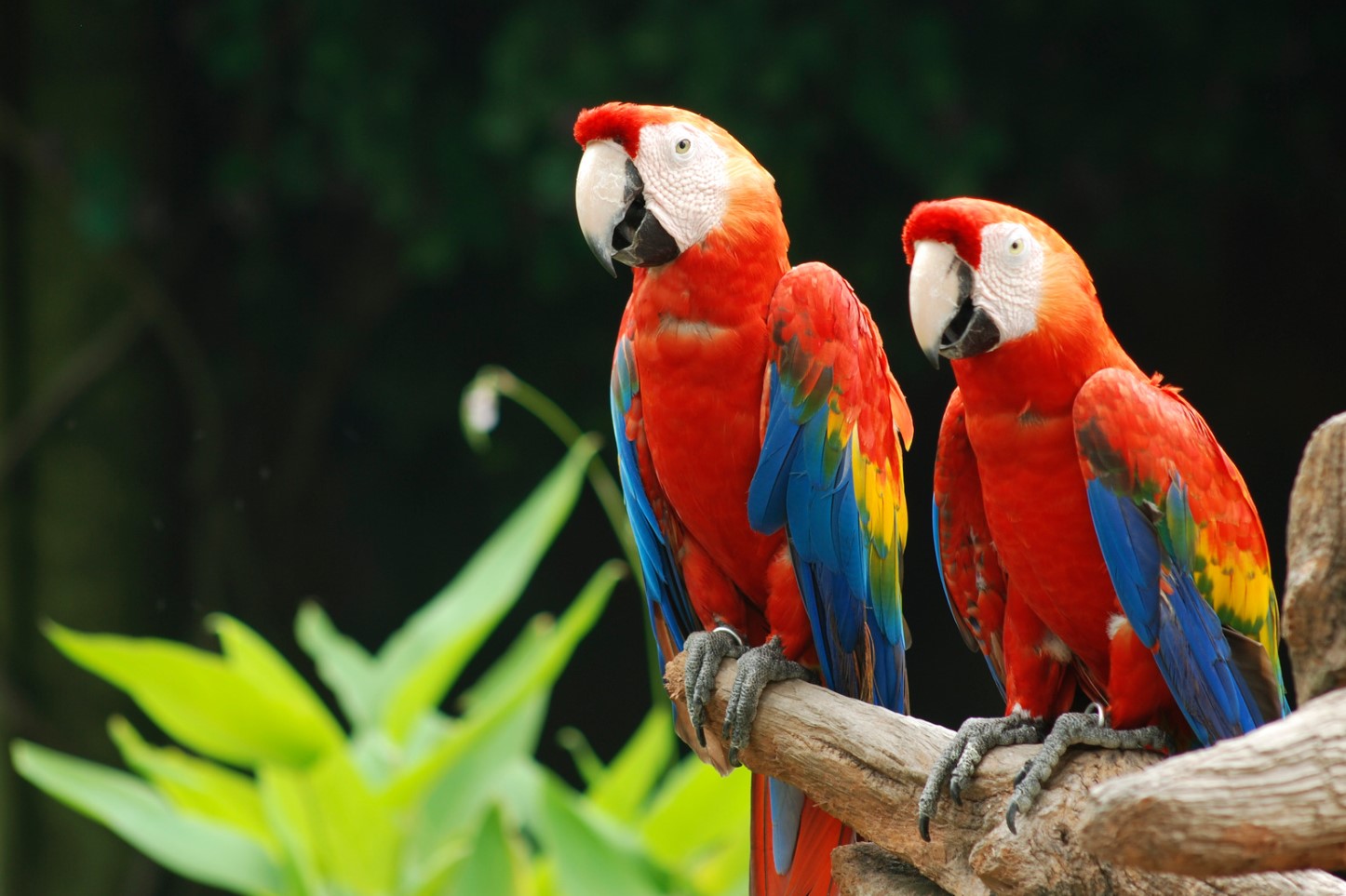
The Importance Of Proper Parrot Training
The Importance Of Proper Parrot Training
Parrots are beautiful and intelligent birds that have become increasingly popular as pets. They are known for their bright plumage, social behavior, and their ability to mimic human speech. However, owning a parrot comes with a set of responsibilities. One of the most important aspects of owning a pet parrot is providing them with proper training. Failure to do so can lead to a frustrated bird that may exhibit unwanted behavior, which can be both dangerous and difficult to control.
Training your parrot is essential to ensure a happy and healthy relationship between you and your feathered friend. One of the main factors in proper training is to create a bond between owner and pet. This is important so that the parrot trusts and respects its owner. A bird that trusts its owner will be more receptive to training, and it will be easier for both of you to establish a healthy relationship. Remember, training should be positive for both you and your bird, never use negative reinforcement as this can have lasting impacts on their behavior.
- Your first goal with training should be to teach basic commands, such as “step up” and “step down.” This will help establish a routine and a level of obedience with your parrot.
- You can also work to teach your parrot fun and engaging tricks, such as turning in a circle or waving. This can provide both you and your bird with entertainment and strengthen your bond.
- It’s also important to teach your parrot how to interact with others, both human and non-human. Proper socialization can prevent aggressive behavior towards strangers or other pets in the household.
Remember, patience and consistency are key in proper parrot training. The process can be time-consuming and sometimes frustrating, but the payoff of a well-trained and well-behaved parrot is certainly worth the effort.
| Pros of Proper Parrot Training: | Cons of Improper Training: |
|
|
In conclusion, proper parrot training is an essential part of owning a happy and healthy feathered companion. It requires patience, consistency, and a positive approach to establish a bond of trust and obedience between owner and bird. Remember to focus on positive reinforcement, using treats and praise to encourage good behavior. With dedication and effort, you will enjoy a happy and fulfilling relationship with your feathered companion that you will cherish for years to come.
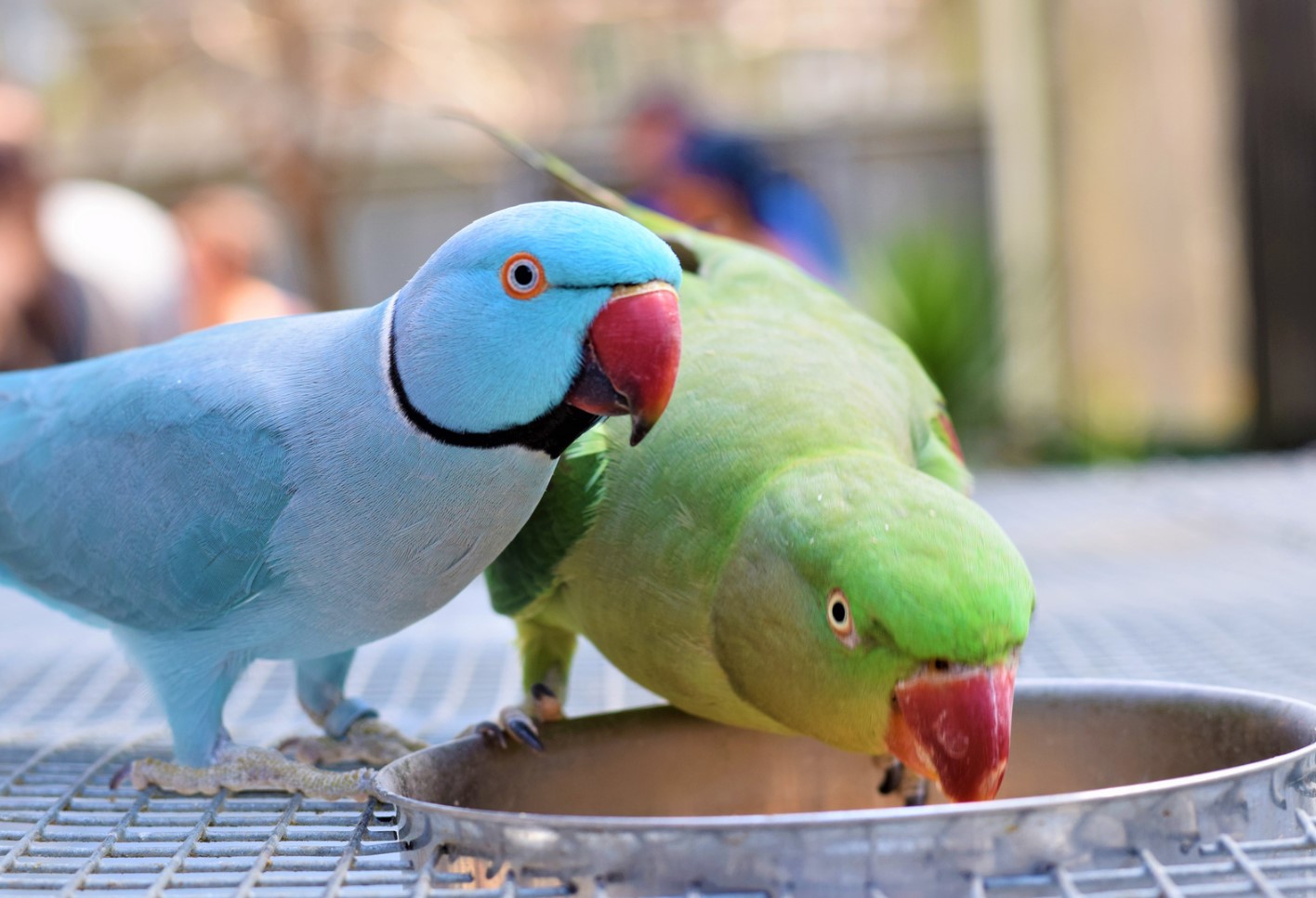
The Best Parrot Foods And Diets
As pet owners, we want to ensure that our beloved parrots are healthy, happy and full of life. One of the ways to achieve this is by providing them with the best foods and diets. Parrots are known for their diverse and unique diets, and it can be challenging to determine the right foods to feed them.
One of the essential foods for parrots is fresh fruits and vegetables. These are a rich source of vitamins, minerals, and fiber that are essential for their health. Parrots enjoy a variety of fruits and vegetables, such as apples, bananas, carrots, broccoli, spinach, and kale. It is important to note that some fruits and vegetables, such as avocados, onions, and garlic, are toxic to parrots and should be avoided.
- Another essential aspect of a parrot’s diet is protein. Their protein intake can come from legumes, nuts, seeds, and cooked meat. It is crucial to ensure that the protein sources are cooked, unsalted, and unsweetened, as excess salt and sugar can harm your parrot’s health. Examples include cooked lentils, boiled eggs, and soybeans.
- Parrots also need carbohydrates in their diet, which can come from grains, such as rice and quinoa. The grains should be cooked and unsalted, and they provide energy and other essential nutrients, such as magnesium, phosphorus, and selenium.
- Water is another critical aspect of a parrot’s diet. Freshwater should be provided to your parrot daily, and it is essential to change the water frequently to avoid contamination.
It is recommended to avoid feeding your parrot processed, sugary, and fatty foods. These can be harmful to their health and can lead to obesity, heart disease, and other health issues. Unhealthy snacks, such as chips, chocolate, and fast food, should be excluded from their diet.
| Healthy Foods For Your Parrot | Unhealthy Foods For Your Parrot |
|---|---|
| Apples | Chocolate |
| Kale | Chips |
| Lentils | Sugar |
| Boiled eggs | Fast food |
In conclusion, providing your parrot with a healthy and balanced diet is crucial to their well-being. Fresh fruits and vegetables, protein sources, and carbohydrates should be included in their diet, while sugary, fatty, and processed foods should be avoided. By following these guidelines, you can help your parrot live a long and healthy life.
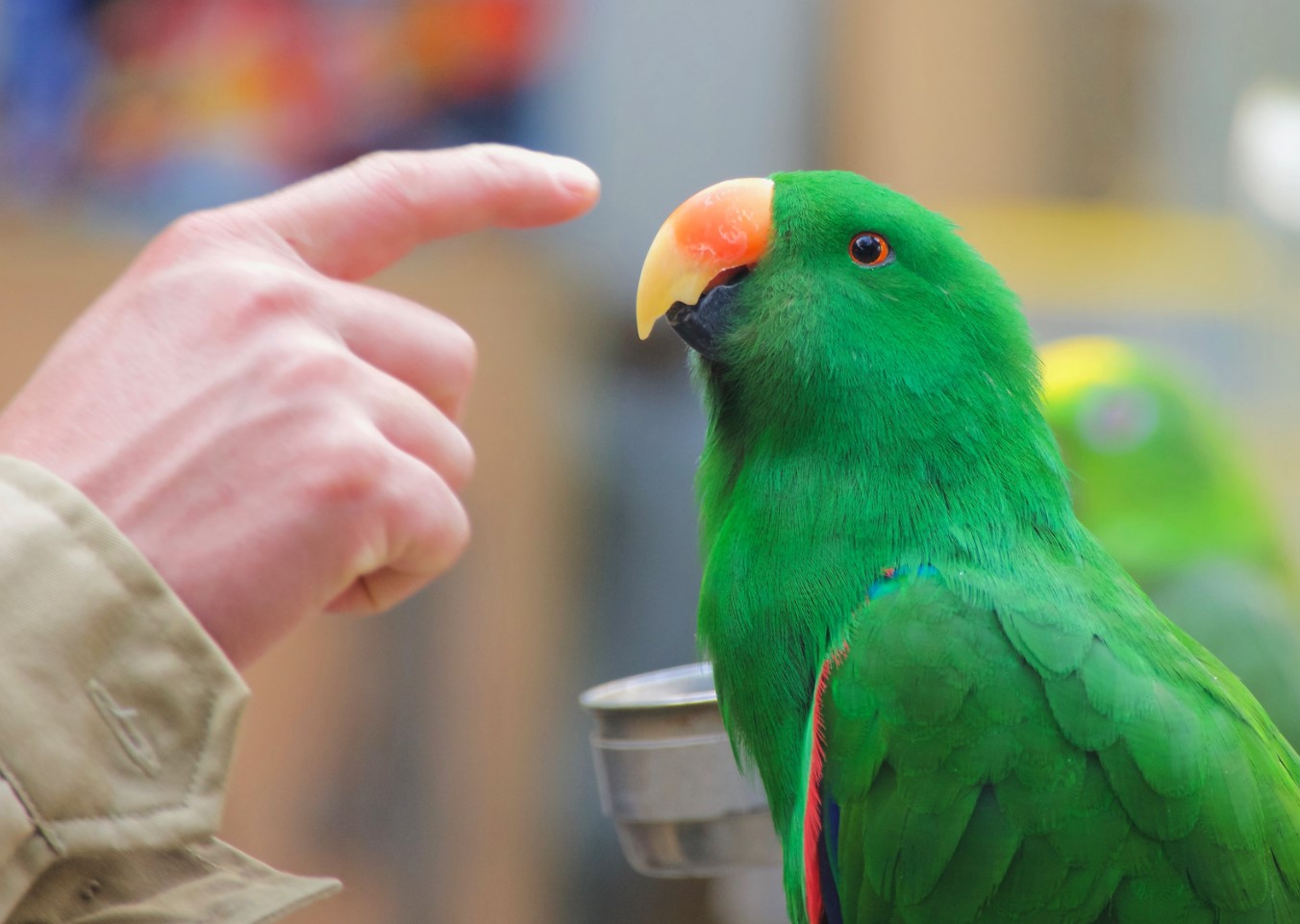
Understanding Parrot Body Language
Understanding Parrot Body Language
Parrots are fascinating creatures that have gained popularity as pets for their ability to mimic human speech, show affection and provide great entertainment. However, one of the most important aspects of keeping a parrot as a pet is understanding their body language. It is crucial to be able to read and interpret their behavior to ensure their wellbeing and happiness.
Posture: The way a parrot holds its body can indicate its mood. A relaxed parrot will hold its body in a natural, upright position with its feathers smooth and close to its body. A parrot that is frightened or anxious will hold its body close to the perch, with its feathers fluffed up and its head lowered. A parrot that is angry or aggressive may hold its body rigidly, with its feathers flared and its beak open.
Head and Eye Movements: A parrot’s head and eye movements can also convey a lot of information. A parrot that is happy and content will have bright, alert eyes and may even turn its head sideways to show interest. A parrot that is nervous or scared may avoid eye contact or blink frequently. A parrot that is curious may tilt its head to one side to get a better view of something.
- Body Language:
- Feather Fluffing: A parrot that is feeling cold or is scared will puff up its feathers to retain heat or to appear bigger and more intimidating.
- Vocalizations: A parrot’s vocalizations can also convey a lot of meaning, such as excitement, fear, aggression, or contentment.
- Beak Movements: A parrot’s beak movements can indicate agitation, such as a rapid opening and closing of the beak.
Conclusion: Understanding parrot body language is a crucial part of owning a parrot as a pet. By being able to read and interpret their behavior, owners can ensure their parrot’s wellbeing and happiness. It is important to observe your parrot’s body language and vocalizations regularly to build a strong bond and to be able to address any issues that may arise.
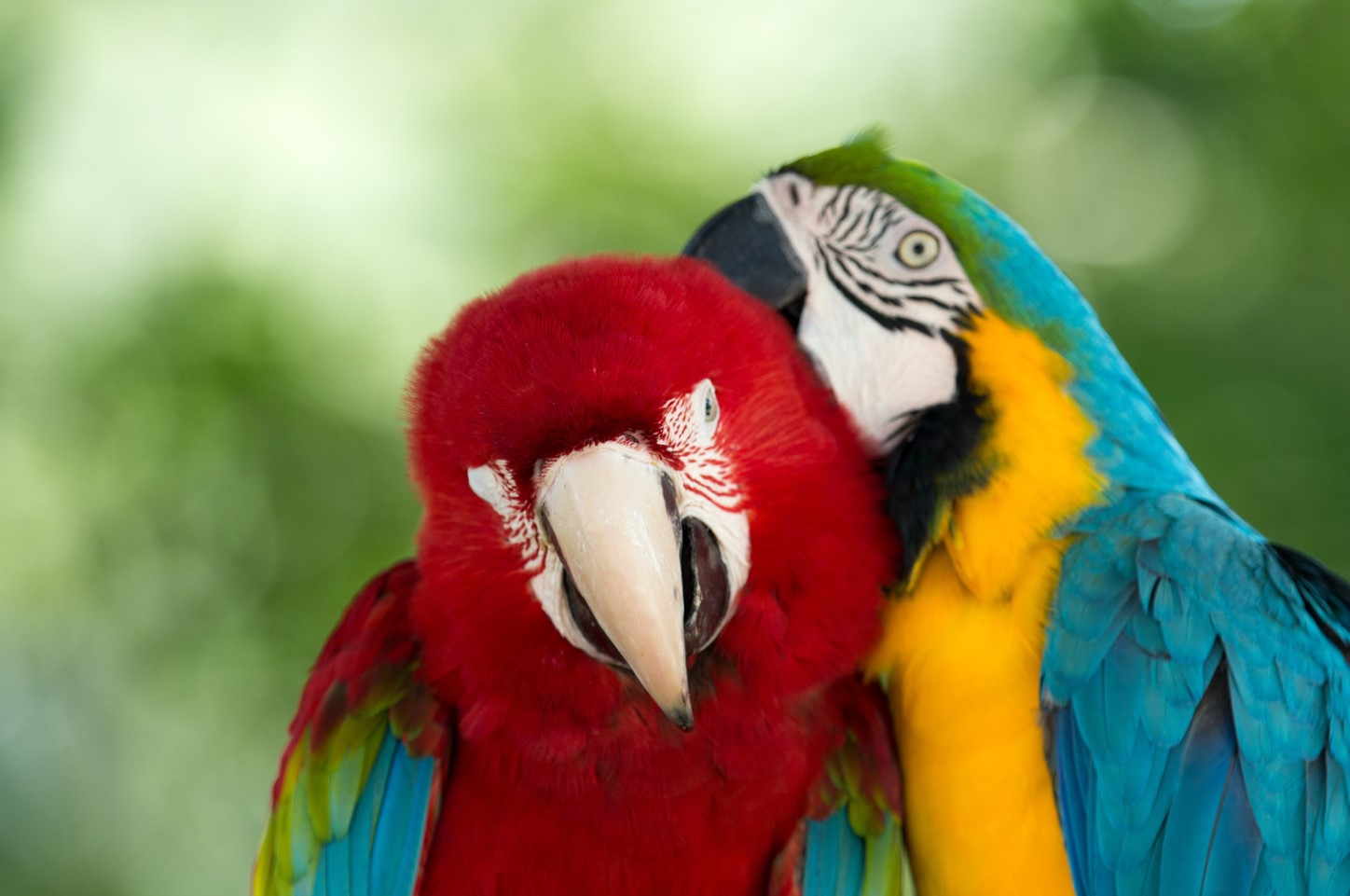
How To Provide The Perfect Parrot Habitat
Providing a suitable habitat is crucial for the health and happiness of your pet parrot. While it might seem that keeping a parrot in a cage is enough, the truth is that these birds need a lot of space and stimulation to thrive. Here are some tips on how to create the perfect habitat for your feathered friend.
- Cage size and design: The cage should be large enough for the parrot to spread its wings fully and move around comfortably. It should also have horizontal bars to allow the bird to climb and play. Avoid round cages or cages with curved corners, as they can cause stress and injury.
- Location: Place the cage in a room where your parrot can interact with you and other family members. However, avoid placing it near windows or doors where there are drafts or direct sunlight. Also, make sure that the cage is not in the kitchen, as cooking fumes can be harmful to birds.
- Natural perches: Provide perches of different sizes and textures, made of natural materials such as wood, rope or branches. These perches will help exercise your parrot’s feet and prevent soreness. Avoid using sandpaper-covered perches or plastic perches, as they can cause injury and discomfort.
Additionally, you can make the habitat more interesting by adding toys, such as ropes, bells, swings, or puzzles. These toys will keep your parrot entertained and mentally stimulated. However, make sure that the toys are safe and non-toxic, and rotate them regularly to prevent boredom.
- Cleanliness: Keeping the habitat clean is essential to prevent diseases and infections. Regularly clean the cage, perches, and toys with mild soap and water. Also, change and wash the food and water dishes daily, and provide fresh food and water at all times.
- Environmental enrichment: Parrots need mental stimulation and social interaction to thrive. Try to spend time with your parrot every day, talking, playing or teaching it new tricks. You can also provide access to natural sunlight and fresh air by letting your bird spend some time outside in a secured area.
- Diet: A healthy diet is crucial for the wellbeing of your parrot. Make sure to provide a balanced diet that includes fresh fruits, vegetables, grains, and proteins. Avoid feeding your parrot processed or sugary foods, as well as avocado, chocolate, and caffeine, which are toxic to birds.
| Do’s | Don’ts |
|---|---|
| – Provide ample space and natural perches | – Use sandpaper-covered perches or plastic perches |
| – Keep the habitat clean and provide fresh food and water | – Place the cage in a drafty or noisy area |
| – Provide toys and mental stimulation | – Overfeed or feed unhealthy foods |
| – Spend time with your parrot and provide social interaction | – Neglect the hygiene and health of your bird |
By following these tips, you can create a safe, comfortable and stimulating habitat for your beloved parrot. Remember, a happy and healthy bird is a joy to be around and can become a lifelong companion.
Factors That Affect Parrot Lifespan
Parrots are beautiful and intelligent birds that have fascinated humans for centuries. They are known for their unique vocal abilities, bright plumage, and playful personalities. If you are a parrot owner or are considering getting one, it is important to understand the factors that can affect their lifespan. The average lifespan of a parrot varies depending on the species, and can range from 15 to over 80 years. However, there are certain factors that can impact their longevity, which we will explore below.
One of the most important factors that can affect a parrot’s lifespan is their diet. Parrots require a varied and nutritionally balanced diet to thrive, which should include a mix of fruits, vegetables, seeds, and pellets. A diet that is deficient in certain vitamins or minerals can lead to health problems over time, such as feather plucking, malnutrition, and weakened immune systems. It is essential to provide your parrot with high-quality food and clean drinking water at all times.
- Proper care and attention can also play a crucial role in a parrot’s lifespan. Parrots are social animals that require plenty of mental and physical stimulation to keep them happy and healthy. They need regular exercise, social interaction, and mental stimulation through toys, enrichment activities, and training. Neglecting these needs can cause a parrot to become bored, stressed, and may lead to health problems or shortened lifespan.
- Genetics and age are also significant factors in a parrot’s lifespan. Some species of parrots are known to have longer lifespans than others, and certain individuals may be more genetically predisposed to certain health issues. Age can also impact a parrot’s lifespan, with older birds generally being more susceptible to health problems and declining quality of life.
Lastly, environmental factors can impact a parrot’s lifespan. Exposure to pollutants, extreme temperatures, and poor air quality can all contribute to health problems and reduced lifespan. It is essential to provide your parrot with a clean and safe living environment, ideally in a location free from potential hazards such as fans, open windows, and potentially toxic household items.
| Factors That Affect Parrot Lifespan | Summary |
|---|---|
| Diet | A varied and nutritionally balanced diet is essential for parrots. |
| Care and Attention | Parrots need regular exercise, mental stimulation, and social interaction to stay healthy and happy. |
| Genetics and Age | Some species may have longer lifespans than others, and age can impact a parrot’s overall health and lifespan. |
| Environment | A clean and safe living environment is essential to ensure optimal health and lifespan for parrots. |
In conclusion, several factors can impact a parrot’s lifespan, including their diet, care and attention, genetics and age, and environment. As a parrot owner, it is your responsibility to provide your bird with a healthy and safe living environment, a varied and balanced diet, and plenty of mental and physical stimulation to keep them happy and healthy. With proper care and attention, your parrot can live a long and fulfilling life.
The Fascinating World Of Parrot Intelligence
Parrots are entertaining creatures that have been kept as pets for centuries. They can mimic sounds, speak words, and provide their owners with endless fun. However, did you know that parrots are also incredibly intelligent, and in some cases, as smart as a 5-year-old child? It’s true, and the world of parrot intelligence is fascinating.
The intelligence of parrots is often underestimated, but these birds have impressive cognitive abilities. For example, they can learn to recognize colors, shapes, and even numbers. In some cases, they can even perform mathematical operations like addition and subtraction.
Parrots also have exceptional memories. They can remember things they have heard or seen for years, and they can recognize faces and voices even after long periods of time. Besides, they are quick learners, and they can learn new tasks and tricks faster than other animals.
- Another fascinating aspect of parrot intelligence is their problem-solving skills. In the wild, parrots use their intelligence to find food, build nests, and communicate with one another. In captivity, they are also adept at solving puzzles and finding ways to escape from their cages.
- Parrots are social animals, and they are known for their ability to bond with humans. They are also capable of empathizing with their owners and can sense when they are upset or unhappy.
- So, if you plan to keep a parrot as a pet, it’s important to understand their intelligence and provide them with plenty of mental stimulation. This can include toys, puzzles, and games that challenge their cognitive abilities.
In conclusion, the world of parrot intelligence is fascinating and constantly evolving. These birds have remarkable cognitive abilities, and as research continues, we are sure to discover even more about their incredible minds. If you’re a parrot owner, take the time to appreciate your bird’s intelligence and provide them with enough stimulation to keep their brains sharp.
Parrots And Their Unique Abilities
Parrots are known for their exceptional abilities. They are not only visually stunning creatures, but also possess skills that make them stand out in the avian world. In this blog post, we will explore the unique abilities of these intelligent birds.
Communication: One of the most notable abilities of parrots is their aptitude for communication. They are able to mimic human words and even learn to associate those words with meaning. This has led to parrots being trained to do a variety of tasks, such as alerting their owners to danger or even answering the phone.
Problem-solving: Parrots are also known for their problem-solving skills. In the wild, they have to be able to find food and protect themselves from predators. In captivity, they have been known to figure out how to open their cages or even solve puzzles in order to get treats.
- Memory:
- Parrots have impressive memories and are able to remember people, places and things even after a long period of time. This ability is particularly noticeable in their vocalizations, as they are able to remember and imitate sounds that they have heard only once or twice.
Emotional intelligence: Another unique ability of parrots is their emotional intelligence. They are able to sense the moods of their human companions and can even offer comfort or affection when they sense that their owner is upset. This emotional awareness has made them popular pets, as they are able to form strong bonds with their human families.
| Ability | Description |
|---|---|
| Vocalization | Parrots can mimic human speech and learn to associate words with meaning. |
| Problem-solving | Parrots are able to solve complex puzzles and even escape from their cages. |
| Memory | Parrots have impressive memory skills, able to remember people and things even after a long time. |
| Emotional intelligence | Parrots are able to sense the moods of their human companions, offer comfort and form strong bonds with their families. |
In conclusion, parrots are truly remarkable and unique creatures. Their communication skills, problem-solving abilities, impressive memory and emotional intelligence make them stand out in the avian world. If you are considering a pet, a parrot may well be one of the best choices!
How To Choose The Right Parrot Breed For You
How To Choose The Right Parrot Breed For You
If you’re searching for a new pet to bring into your home, consider getting a parrot. Parrots are highly intelligent birds that can provide excellent companionship for their owners. When choosing a parrot, it’s important to choose the right breed that fits your personality and lifestyle.
Step 1: Research different breeds
- Start researching different parrot breeds to find out which one is right for you.
- Consider the size of the bird and how much space you have available in your home.
- Think about the parrot’s personality and if it will fit well with your own.
Step 2: Consider your lifestyle
When choosing a parrot, it’s essential to consider your lifestyle. If you work long hours and don’t have much free time, a highly social parrot may not be the best choice for you. On the other hand, if you have a lot of free time and enjoy socializing, a parrot that loves human interaction may be ideal.
Step 3: Visit a breeder or pet store
| Pros | Cons |
|---|---|
| You can see the parrot in person and interact with it before making a decision. | The breeder or pet store may not have the specific breed you’re looking for. |
| You can ask questions and get advice from the breeder or pet store staff. | The parrot may be more expensive to buy from a breeder. |
If you have found a breed that interests you, visit a breeder or pet store that specializes in that breed. Interact with the parrot to see if it is a good fit for you. You can also ask questions and get advice from the staff.
Step 4: Adopt from a rescue organization
If you are considering adopting a parrot, look for a rescue organization that specializes in parrots. These organizations provide a safe haven for parrots that were rescued from neglect, abuse, or abandonment. Adopting from a rescue organization can also be more affordable than buying from a breeder or pet store, and you’ll be giving a parrot a second chance at life.
In conclusion
Choosing the right parrot breed for you requires careful research and consideration. Think about your lifestyle, visit a breeder or pet store, and consider adopting from a rescue organization. With patience and diligence, you can find the perfect parrot to bring into your home.
Common Parrot Health Issues And How To Prevent Them
Parrots are one of the most beloved pets in the world. They are well-known for their intelligence, charming personalities, and striking beauty. However, like any other living creature, parrots are susceptible to a variety of health problems. Here are the most common parrot health issues you should know, and how to prevent them.
Chlamydiosis (Psittacosis)
This is a bacterial disease that affects both humans and birds. The disease can be transmitted to humans through contact with contaminated feces, droppings, and respiratory secretions. Symptoms of chlamydiosis in parrots include weight loss, lethargy, respiratory distress, diarrhea, and conjunctivitis.
- To prevent chlamydiosis, always wash your hands thoroughly after handling your parrot, its cage or any accessories.
- Keep your pet’s cage clean and sanitize it regularly, especially if there are other birds in the same environment.
- Take your parrot to the vet regularly for check-ups and treatment if necessary.
Feather Plucking
This is a behavior that is common among parrots. Parrots can pluck their feathers for a variety of reasons, including stress, boredom or skin irritation. Feather plucking can lead to skin infections, malnutrition, and even death in severe cases.
- To prevent feather plucking, make sure your parrot is living in a stress-free environment
- Provide your pet with adequate toys and accessories that will keep them mentally and physically stimulated.
- If you notice that your bird is plucking its feathers, consult your veterinarian as soon as possible.
Vitamin A Deficiency
Vitamin A plays a crucial role in the overall health of your parrot. It is essential for their vision, skin, feathers, and immune system. A vitamin A deficiency can lead to rough skin, eye infections, respiratory diseases, and even death.
| Food sources of Vitamin A: | Benefits: |
|---|---|
| Carrots and Sweet Potatoes | Improves vision and boosts the immune system |
| Kale and Spinach | Helps to maintain healthy skin and feathers |
| Eggs and Cheese | Helps in the formation of healthy bones |
If you notice any signs of vitamin A deficiency in your parrot, take them to the vet immediately. Your veterinarian may recommend a dietary supplement or a change in your pet’s diet to address the deficiency.
By knowing the most common health issues that affect parrots, you can take the necessary steps to ensure that your feathered friend remains healthy and happy. A healthy parrot is a happy parrot!
Parrot Conservation Efforts Around The World
Parrots are known for their vibrant colors and their unique ability to mimic human speech. Unfortunately, they are also one of the most threatened bird species in the world. There are over 350 species of parrots, and many of them are in danger due to habitat loss, poaching, and the pet trade. In response, there are numerous conservation efforts aimed at protecting parrots and their natural habitats.
One of the most effective ways to protect parrots is through habitat conservation. This involves protecting the forests and other natural areas where parrots live from destruction and degradation through logging, mining, and other human activities. These efforts can include the establishment of protected areas such as national parks, wildlife reserves, and forest concessions. Additionally, some organizations work with local communities to promote sustainable land use practices that benefit both people and wildlife.
- Another crucial conservation effort is the reduction of illegal wildlife trade. Many parrots are taken from the wild and sold as pets, leading to a significant decline in their populations. Organizations such as the Convention on International Trade in Endangered Species of Wild Fauna and Flora (CITES) work to regulate the trade of endangered species and to prevent illegal trading.
- Educational programs are also an essential part of parrot conservation. Many people are unaware of the threats facing parrots, and so programs that raise public awareness and promote conservation efforts are crucial. Additionally, education programs help increase public understanding of parrot behavior, habitat needs, and ethical considerations surrounding parrot ownership.
| Conservation Efforts | Organizations Involved |
|---|---|
| Habitat conservation | World Parrot Trust, Rainforest Trust, BirdLife International |
| Reduction of illegal wildlife trade | CITES, TRAFFIC, Parrots International |
| Educational programs | World Parrot Trust, BirdLife International, Parrots International |
Parrots are some of the most beloved and unique birds on the planet, but they are also among the most threatened. Through habitat conservation, reduction of illegal trade, and education programs, we can work to protect these amazing creatures and ensure their continued survival for generations to come.